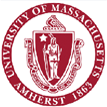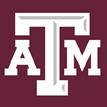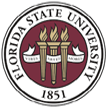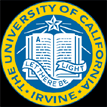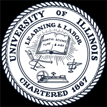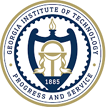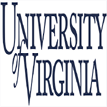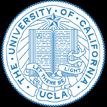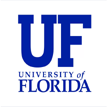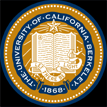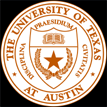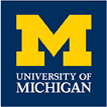

Study in USA
Application Process, College, Courses, and Universities
The United States is a world-famous study destination with hundreds of prestigious universities and colleges offering high-quality degrees and diplomas recognized by most employers worldwide. The USA’s flexible education system, multicultural environment, and ample career opportunities are some of the most prominent reasons that attract students from all over the world to this beautiful country to study at both the undergraduate and master’s levels. US universities offer many research programs which open up the gates for brilliant career options for students. Here are some more reasons why international students choose the USA as their study destination.
Why Study in the USA?
Reasons to Join Institutes of USA
Quality Education
The US is home to some of the best universities, which consistently rank high in world university rankings. For the year 2021, the ranking agencies QS and The Times Higher Education have chosen 160 and 181 American institutions, respectively, the highest than any other country, enough to show American educational institutions’ excellence.
Flexible education system
The American education system is highly flexible. It lets you choose not only your course content but also structure. Moreover, It is usually not required to declare a major until the end of your second year, which means you get enough time to explore your interest and choose your career path accordingly.
International Reputation
The success of American universities is reflected in the raking of the world university. In addition, high-quality education, abundant research opportunities, and a robust international student support system have brought them an excellent reputation worldwide.
Multicultural Classrooms
Cultural diversity is a trademark of American universities. Students from different countries, religions, or ethnicities study there, making it a rich and memorable experience. US universities’ progressive Campus life is a major attraction for international students.
Research Opportunities
American educational institutions are equipped with some of the most advanced teaching and research tools that put you ahead of others and help advance your career.

Requirements to Study in USA
The US embassy primarily offers three types of Student visas: F1, M1, and J1. Most probably, the visa type you will need would be an F1 student visa. F1 Visa allows international students to complete their academic studies in the USA. M1 is for non-academic or vocational courses, and the J1 is for those international students who want to participate in the government-recognized cultural exchange programs.
Eligibility Criteria
Moreover, no fixed guidelines are for students for entry requirements in USA institutes. But for admission, the following documents must be considered carefully.
For Under-Graduate
High School Diploma and Transcripts
Bank Letter with Adequate funds
Affidavits of financial support
Passport Copy
I20 (After acceptance)
Adequate funds for fee submission
For Graduate
Bachelor’s Degree + Transcripts (4 years of study)
Bank Letter with Adequate funds
Affidavits of financial support
Passport Copy
Letter of Recommendation
Resume
I20 (After acceptance)
Adequate funds for fee submission
How to Apply for Study Visa for USA
USA Study Visa Process
Almost every International Student wants to do a part-time job while studying. Due to day-to-day expenses, it has become necessary for students to work along with their studies. During the part-time job, students learn many things like Time Management, Work culture, etc. Students can find part-time jobs like Payroll Administrator, Part Time Advisor, Faculties Support and Care Assistant, etc.
Pay fee of SEVIS (Student and Exchange Visitor Information System)
Pay the visa fee.
Then, complete the application form of visa
Book an appointment for a visa interview
Finally, attend the interview for a visa.
The team of Ganpati House of Achievers will help you throughout the process by giving proper assistance.


New Zealand StudWork while Study in USAy Visa Requirements
Earn while Studying
Part-Time work opportunities in the US can help you to earn enough to meet your daily expenses. It is also a great way to build a professional network and familiarise yourself with the American work culture. Although working part-time may not be enough to support entirely, it can certainly help to lower the cost. Internship work experience will undoubtedly look good in your resume.
However, you can’t directly go out and get any desirable job as an international student. There are some rules that students must follow. Before you start finding a job in the USA as a student, contact your Designated School Official (DSO). Then, DSO will guide you throughout the procedure of applying for a Social Security Number, which is required for all students working in the US, and help you through various steps.
Employment Opportunities:
There are four ways for International Students to work legally in the US on an F1 (student) visa:
Curricular Practical Training (CPT): CPT is a temporary employment authorization or internship program that is intended to give students real-world experience in their Majors. the Internship may also have credit points. CPT work opportunities can be on Campus or off Campus.
On-Campus CPT: as an international student, you start your CPT as early as in the first semester of the class. You can work up to 20 hours per week under this program.
Off-Campus CPT: the majority of students choose off-Campus CPT programs. The significant benefit of doing an Internship off Campus is that It allows you to work a minimum of 40 hours a week.
Optional Practical Training (OPT):
OPT is temporary employment related to the study field by which eligible students can get up to 12 months of OPT employment.
IQ Immigration is committed to providing you with the most authentic, legal, and credible overseas education information. We offer customized overseas education guidance as per individual needs. Our experienced team of Study Visa Consultants which consists of education, legal, and finance professionals, makes the entire application process a delightful experience!
Intakes in USA | August, January & May
The United States remains the leading choice for international students who want to pursue higher education in the USA. Home to ivy league institutions, the country offers some of the best world class universities, diverse academic programs, cutting edge research opportunities and cultural diversity making it an appealing choice for international students. Looking towards the 2025-2026 academic year, students around the globe are preparing for the various intakes in USA offered by the US institutions. Therefore, it is extremely important to understand the various intakes, their deadlines and how students fit into the academic planning so that they can successfully navigate the admission process.
In this article, we will take a deep dive into the major upcoming intakes in the U.S for the 2025-2026 academic year, focussing on key deadlines, the application process, eligibility criteria for gaining university admissions and various other reasons.
Understanding the Intakes in USA university
Universities in the United States offers multiple intakes throughout the year however, the most common intakes are:
- Fall intake ( August/September)
- Spring intake (January)
- Summer Intake (May/June)
Each intake offers unique advantages and opportunities based on applicant’s academic plans, preferences and readiness.
Fall Intake (August/ September 2025)
The fall intake is the most prominent and preferred intake in the United States, a majority of international students opt to begin their studies at this time. This academic year typically begins in late August or early September and a majority of universities offer the largest selection of programs, courses and financial aid opportunities during this intake.
Key Features of the Intake:
- Widest Program Availability: Almost all US universities open admissions for all programs, including undergraduate, graduate and doctoral programs during the fall intake.
- Scholarships: Students applying for the Fall intake have access to the majority of merit-based and need-based scholarships.
- Internships and Jobs: The academic schedule aligns well with summer internships, which students can apply for after completing one academic year.
Spring Intake (January)
The spring intake is also known as the January intake, which is the second most popular academic session. Although fewer students apply for this intake compared to fall, it offers an excellent opportunity to students who may have missed the Fall deadlines or require more time to prepare their applications.
Key Features of the Intake:
- Fewer Program Options: While many universities still offer a wide range of programs during the spring intake, some specialized programs may only be available in the Fall.
- Flexible Timeline: Spring intake provides students an additional six months to prepare for their studies, allowing time to complete required exams, improve their academic profile or gather necessary funds.
- Smaller Cohort: The number of students starting in Spring is significantly lower than in Fall, which can lead to a more close-knit learning environment.
Summer Intake (May/June)
The Summer intake, while less common, is another option available at select U.S. universities. This intake typically has fewer programs and students, often focusing on specialized courses, professional development programs, or accelerated degree tracks. For students who need to start mid-year, Summer intake can serve as an ideal bridge before transitioning to a Fall or Spring session.
Key Features of summer Intake:
- Accelerated Courses: Many programs offered in summer intake are accelerated, allowing students to complete course in a shorter period, which can be beneficial for those looking to graduate early.
- Smaller Class Size: Similar to the Spring intake, Summer intake classes are typically smaller, providing more personalized attention from professors.
Eligibility Criteria for Universities Upcoming Intakes in USA
The undergraduate programs in the U.S typically lead to a bachelor’s degree and require applicants to have completed their secondary education. The specific requirements can vary based on the university and program.
Academic Requirements
- High School Diploma or Equivalent: Applicants must have completed their secondary education (equivalent to U.S. high school education) with a recognized qualification. International students may need an equivalent certification such as A-Levels, the International Baccalaureate (IB), or other national high school diplomas.
- Standardized Tests: A majority of US universities require standardized test scores like SAT or ACT. Some universities have made these tests optional, but they can still be advantageous for applicants.
English Language Proficiency
Non-native english English speakers must demonstrate proficiency in English through tests such as TOEFL (Test of English as a Foreign Language) or IELTS (International English Language Testing System). Minimum score requirements vary by university but are typically around:
- TOEFL: 80-100 (internet-based test)
- IELTS: 6.0-7.0
Transcripts and Academic Records
Applicants must submit transcripts or report cards from their high school, showing strong academic performance across key subjects. Some universities specify a GPA requirement (often a minimum of 3.0 on a 4.0 scale).
Letters of Recommendation
Most U.S. universities require 2-3 letters of recommendation from teachers, counselors, or other educational professionals who can speak to the student’s academic abilities and character.
Statement of Purpose (SOP) or Personal Essay:
A personal essay or statement of purpose is required by most universities. This is an opportunity for the student to explain their academic interests, extracurricular achievements, career goals, and why they wish to study at a particular institution.
Application Fee:
An application fee (typically ranging from $50 to $100) is required when submitting the application. Some universities offer fee waivers for eligible students.
Conclusion
The upcoming intakes in USA for the 2025-2026 academic year in the U.S. present a variety of opportunities for prospective students from around the world. While the Fall intake remains the most popular and comprehensive, offering the widest range of programs and scholarships, the Spring and Summer intakes provide valuable alternatives for those needing additional preparation time or seeking smaller cohorts and more personalized attention. Each intake has its unique advantages, and students should carefully consider factors such as program availability, admission competitiveness, financial aid, and career opportunities when choosing the most suitable intake.
Regardless of the intake, successful admission to U.S. universities requires thorough preparation, timely application submission, and a clear understanding of individual university deadlines and requirements. By planning ahead and staying informed about key timelines, students can make the best choices for their academic and career goals, ensuring a smooth and successful transition into the U.S. higher education system.
Associate with
